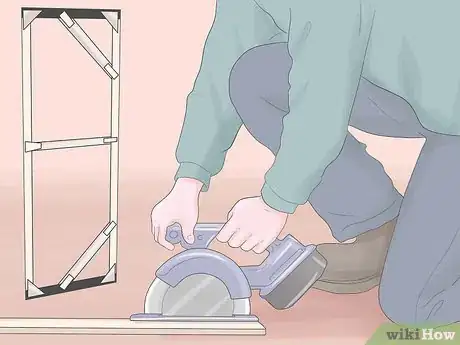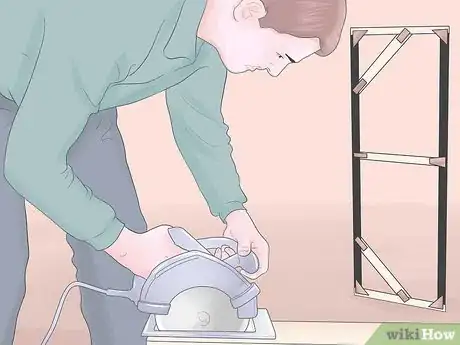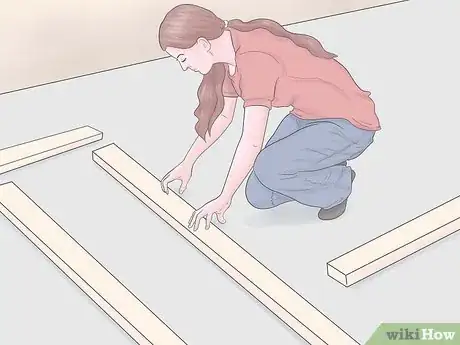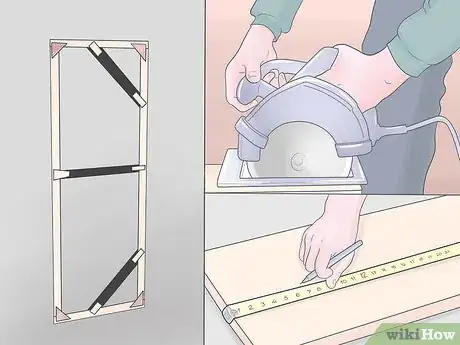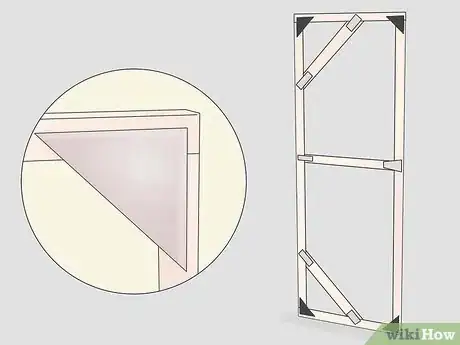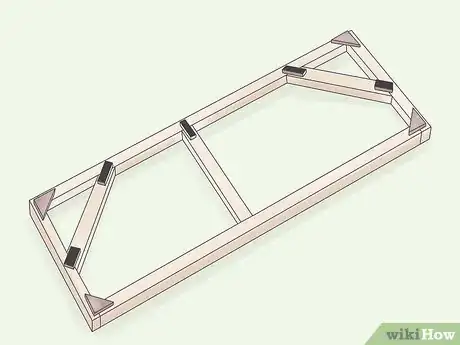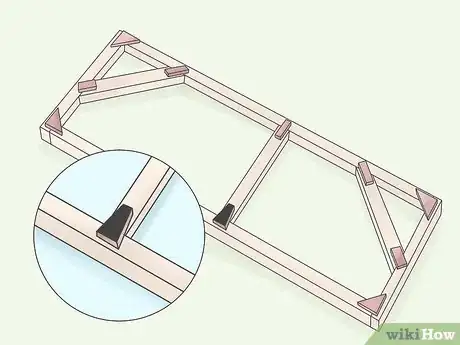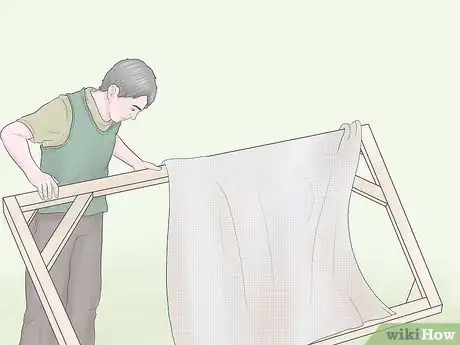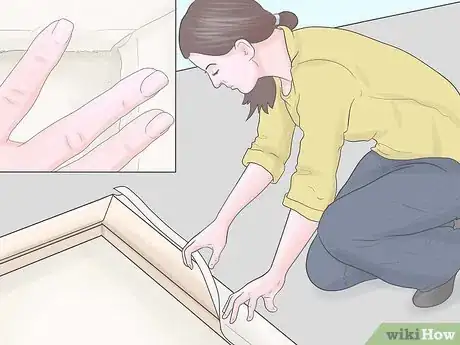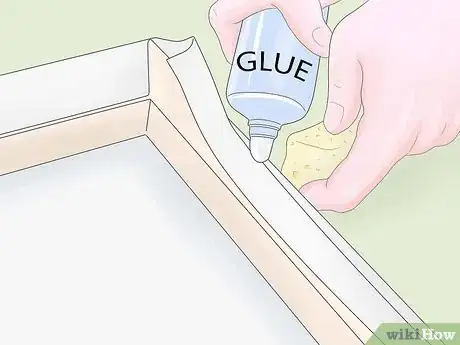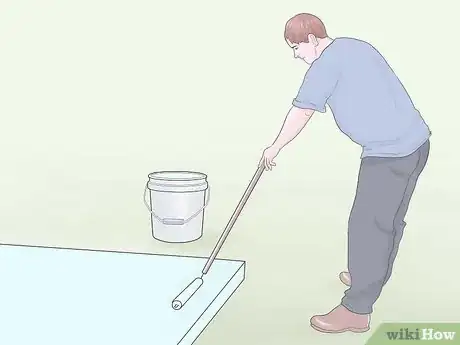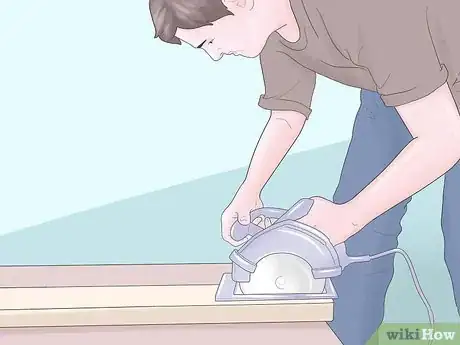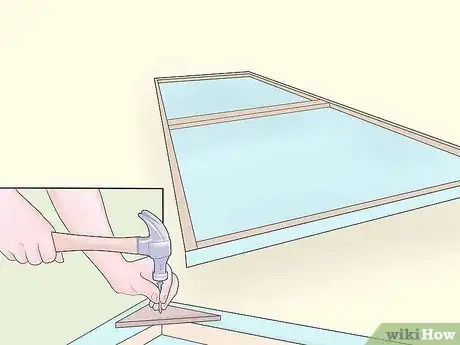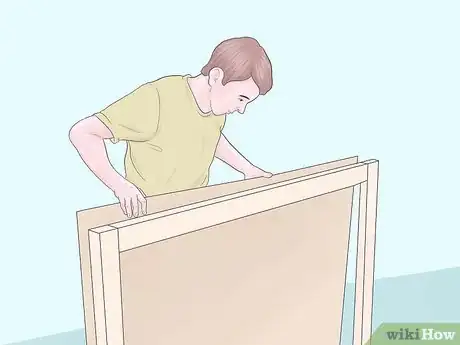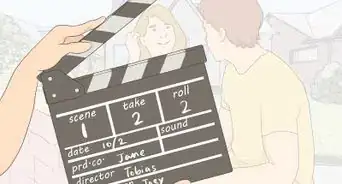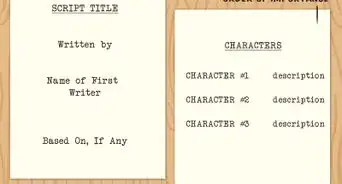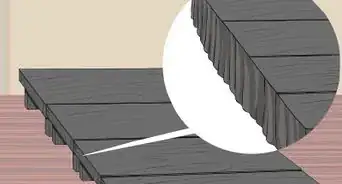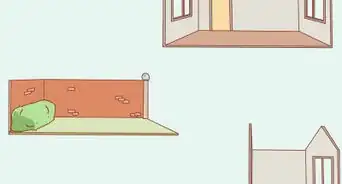wikiHow is a “wiki,” similar to Wikipedia, which means that many of our articles are co-written by multiple authors. To create this article, 16 people, some anonymous, worked to edit and improve it over time.
This article has been viewed 200,767 times.
Learn more...
Theatre flats, or scenery flats, are placed at the back and sides of a stage and painted to provide a background for the performance. Flats come in two styles. A Broadway flat is made by stretching canvass over a frame to create a one-dimensional background. A Hollywood flat is made by turning the boards on their edges to make a three-dimensional, box-like frame. Each type is uniform in size and design so they can be stacked together and stored in a small space. You can build theatre flats from lumber, plywood, and cloth.
Steps
Broadway Flat
-
1Cut lumber for the rails, which will form the top and bottom of the flat. You need 2 4-foot (1.2 meter) boards from 1-by-3-inch (20 by 65 mm) or 1-by-4-inch (20 by 90 mm) of pine lumber.
-
2Measure and cut 2 boards to form the sides of the flat, called the stiles. The finished flat will measure 8 feet (2.4) tall.
- Lumber dimensions refer to the unfinished boards, so 1-by-3-inch lumber actually measures 3⁄4 inch (1.9 cm) (19 mm) by 2-1/2 inches (64 mm). And, 1-by-4-inch lumber actually measures 3⁄4 inch (1.9 cm) (19 mm) by 3-1/2 inches (89 mm).
- If you're using 1-by-3-inch lumber, the stiles should be cut to 91 inches (230 cm) (2.31 m); if using 1-by-4-inch lumber, cut the stiles to 89 inches (230 cm) (2.26 m).
Advertisement -
3Assemble the boards into a rectangle on the floor of your workspace. Don't attach the boards to one another.
-
4Measure and cut 3 additional boards from the same lumber.
- One board will become the toggle. Place this inside the frame between the two stiles so it divides the frame into equal top and bottom sections.
- Two boards will serve as corner braces. Cut these on the miter and place them between the top rail and left stile, and the bottom rail and left stile.
-
5Cut 4 triangular pieces of plywood to serve as corner blocks. Attach them to the 4 corners of the frame, where the rails meet the stiles, with carpenters glue and pneumatic staples.
-
6Measure and cut 5 straps from the plywood. Use these to attach the corner braces to the rails and stiles and to attach the left side of the toggle to the left stile. Use glue and staples.
-
7Cut a trapezoidal piece of plywood to be the keystone. Attach this to the right side of the toggle to the right stile with glue and staples.
-
8Turn the frame over and cover the front with muslin or canvas. Lay the cloth over the frame and staple it into place along the insides of the rails and stiles.
-
9Fold the edges of the cloth back so the rails and stiles are exposed. Paint the boards with thinned carpenter's glue and smooth the edges back do wn.
-
10Go over the edges with a damp sponge, let the glue dry, then trim the cloth.
-
11Cover the cloth with a coat of paint to size it. It will stiffen and shrink slightly, becoming taut.
Hollywood Flat
-
1Cut lumber for a frame. Cut 1-by-2-inch (20 by 45 mm) or 1-by-3-inch (20 by 65 mm) pine lumber to create a frame that is 4 feet (1.2 meters) wide and 8 feet (2.4) meters tall. Cut a toggle as well.
-
2Assemble the frame by nailing the boards together.
-
3Cover the front with 1/4-inch (6 mm) or 1/8-inch (3 mm) lauan—a thin tropical plywood with a smooth surface that's easy to paint.
Community Q&A
-
QuestionHow do I build movable chairs or steps for kids in the theater?
 Community AnswerBuild hollow stairs with wheels on the bottom. Attach wheels to the bottom of chairs to make them moveable.
Community AnswerBuild hollow stairs with wheels on the bottom. Attach wheels to the bottom of chairs to make them moveable. -
QuestionWhat is the approximate cost for a standard flat?
 Community AnswerDepending on materials used it can be less than 10 dollars generally. You can reduce the cost by using scrap materials, or reusing old flats. You might be able to find a theater that will let you borrow a few or use theirs for a mention in your production credits the more resourceful, the less you will spend.
Community AnswerDepending on materials used it can be less than 10 dollars generally. You can reduce the cost by using scrap materials, or reusing old flats. You might be able to find a theater that will let you borrow a few or use theirs for a mention in your production credits the more resourceful, the less you will spend. -
QuestionIf I am making frames for theater flats and facing them with overlapped featheredge boards instead of wood or canvas, should I still use plywood corner blocks, straps and keystones for stability?
 Community AnswerYes. The facing of the flat may change according to the current show, but the flat structure should remain solid and square. Use 1/4” Luann to face the flat, this will help with squaring. Then attach your decorative featheredge boards to it.
Community AnswerYes. The facing of the flat may change according to the current show, but the flat structure should remain solid and square. Use 1/4” Luann to face the flat, this will help with squaring. Then attach your decorative featheredge boards to it.
Things You'll Need
- 1-by-2-inch (20 by 45 mm), 1-by-3-inch (20 by 65 mm) or 1-by-4-inch (20 by 90 mm) pine lumber
- 1/4-inch (6 mm) or 1/8-inch (3 mm) lauan plywood
- Miter saw
- Jigsaw
- Staple gun
- Carpenters glue
- Paint
- Paintbrushes
- Hammer
- Nails
About This Article
If you want to learn how to build a theatre flat, start by cutting pine lumber to create a frame that is 4 feet wide and 8 feet tall to make a Hollywood flat. Make sure that you cut a toggle as well, which will be placed inside the frame to divide it into equal top and bottom sections. Then, assemble the frame by nailing the boards together. Finish by covering the front of the frame with 1/4 inch or 1/8 inch lauan, which is a thin tropical plywood with a smooth surface that’s easy to paint. For more ways to build a theatre flat, including how to build a Broadway flat, scroll down!
